A finales de Junio 2011 Workshop con armas blancas con Guro Dino Flores - conocido como uno de los peleadores más técnicos y avanzados del grupo SOG de LAMECO y KALIS ILUSTRISIMO (Sulite Original Backyard Group) http://www.kali-jeetkunedo.com/6noticias.html Interested contact with Sifu Tim Fredianelli 615308348 Space must be reserved in advance for these courses, places are limited to ensure quality. Special rates and privileges for members only at our school … [Read more...]
Guro Dino Flores Seminar: Madrid, Spain. A finales de Junio 2011 Workshop con armas blancas con Guro Dino Flores – conocido como uno de los peleadores más técnicos y avanzados del grupo SOG de LAMECO y KALIS ILUSTRISIMO
Los Angeles – Historic Filipinotown Chapter of Lameco SOG
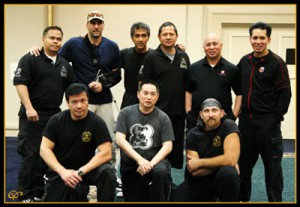
Los Angeles – Historic Filipinotown Chapter of Lameco SOG By Mandirigma.org Lameco SOG members including: Joel Adriatico, Roger Agbulos, Jason Ancheta, Hospecio "Bud" Balani Jr., Ron Balicki, Rem V. Cruz, Marc F. Denny, Mar Elepaño, Bryant Emerson, Choy Flores, Dino Flores, Dave Gould, Steven Grody, Elmer R. Hebia, Sung Han Kim, Eric Dupois Koh, Arnold A. Noche, Lowell Pueblos, Gary Quan, Phillip Rapagna, Pantaleon "Mang Leo" Revilles, Jr. (RIP), Hans Anton Tan, Steve Tarani, Pelix Velenciar and Rodney Wilson. The group occasionally gets together to train or collaborate. Many are busy with heading their own organizations. A good number of the Lameco SOG members have continued to train together regularly since their teacher's death in 1997. Besides continued training in the Lameco Backyard Method, the group also continued study in the Lameco primary root fighting systems of Ilustrisimo and De Campo Uno-Dos-Tres Orihinal. This group is sometimes reffered to as The Los Angeles – Historic Filipinotown Chapter of Lameco SOG. This includes Guros Joel Adriatico, Hospecio "Bud" Balani Jr., Mar Elepaño, Choy Flores, Dino Flores, Arnold Noche, Gary Quan, Hans Anton Tan and Pantaleon “Mang Leo” Revilles, Jr. (RIP). It is also this group that came up with the term “SOG” or Sulite Orehenal Group with the guidance and approval of the two highest-ranking Lameco Eskrima International members, Master Christopher N. Ricketts and Master Reynaldo S. Galang. A few of these members to teach the public, however most prefer to keep their knowledge a private matter. When Christopher N. Ricketts moved to California backyard members Hospecio "Bud" Balani Jr., Mar Elepaño, Bryant Emerson, Ron Baliki, Choy Flores, Dino Flores and Arnold Noche trained under Master Rickets in Ilustrisimo and recognized him as the highest ranking Lameco Eskrima Member. With the tragic passing of Master Ricketts, the highest ranking Lameco Eskrima Member is currently Master Rey Galang Above is the largest Filipino-American mural in the U.S.A. located in Historic Filipinotown, Los Angeles. Painted by Eliseo Art Silva. The mural measures 145 feet x 25 feet. The mural was created in commemoration of the Centennial of the Philippine Revolution against Spain … [Read more...]
Punong Guro Edgar G. Sulite and Lameco Eskrima
Punong Guro Edgar G. Sulite and Lameco Eskrima Lameco Eskrima is a highly combative form of martial arts originating from the Philippines. The ancient warrior arts of the Philippines are generally known as Arnis, Kali or Eskrima. The founder of Lameco Eskrima, the late Punong Guro Edgar G. Sulite, learned these techniques from several prominent grandmasters in the Philippines. The quest for knowledge led him on an adventure that took him throughout the Philippine islands. The result of his journey resulted in Lameco Eskrima. The word “LAMECO” reflects the three ranges of combat. “LA” for largo or long range of combat, “ME” for medio or medium range of combat and “CO” for corto or close range of combat. The Lameco insignia represents the following: The Triangle represents the integration of the mind, body and spirit and the unity of these three elements. The Kris sword, the Balisong and the Bastons represent the Warriors of the Philippines. The Kris sword represents the island of Mindanao (Southern Philippines) where it is still used by the Muslims. The Balisong knife (butterfly knife) represents the island of Luzon (Northern Philippines) where it originated. The Baston (rattan stick) represents the islands of the Visayas (Central Philippines). The Arrows represent the flow of nature and the concept of going with the force, blending, not contradicting the laws of nature. Lameco Eskrima teaches the following Filipino weapons: Solo baston (Single stick), Doble baston (Double Stick), Espada y daga (Sword and Dagger), Solo daga (Single dagger), Doble daga (Double Dagger), Centro baston (Center stick Grip), Susi (Stick with Key Grip), Itak (Sword), Doble Itak (Double Sword), Panyo (Hankerchief), Mano y Mano and Dumog (Empty Hands). Punong Guro Sulite was also an innovator and inventor. He invented the sparring arm guard and hand guard with the assistance of master Yuli Romo. With the input of the Five Pillars of Ilustrisimo they introduced the world to hand sparring to develop accuracy, range and timing. This method has now become standard practice in numerous Eskrima Systems. Punong Guro and his fellow Pillars of Ilustrisimo initially only sparred with live rattan sticks only. Unfortunately this led to many injuries that took them out of the training that they lived for. They sought a safer alternative to spar without losing respect for the weapon by wearing too much protection. This led to the development of real rattan sticks with light padding or the padded stick used in conjunction with minimal protective gear. Thus the Backyard Curriculum consisted of Light Sparring or Hand Sparring, mid level intensity with padded sticks and minimal gear and finally Live Stick with minimal gear. It was Master Christopher Rickets that implementing sparring into the regular LAMECO curricul um. Punong Guro is the author of three books, including “Secrets of Arnis”, “Advanced Balisong” and “Masters of Arnis, Kali and Eskrima”. Punong Guro has been featured in numerous magazines such as “Inside Kung-Fu” and “Cinturon Negro” in Europe. Punong Guro is the featured instructor in several videos including “Lameco Eskrima at the Vortex”, “Laban Laro 1 & 2” and a whole series by Unique Publications. His book, “Masters of Arnis, Kali and Eskrima” was a landmark publication as it was the first time a researcher traveled and trained throughout the Philippine islands and compiled the findings in a book. This book opened up numerous Masters and Systems to the rest of the world outside of their province of origin and influenced the majority of books that came after it. Many of the photographs that Punong Guro Sulite took for his book also appear in the the books of Master Rey Galang and Mark Wiley. Guro Dino Flores can be contacted for Classes or Seminars at mandirigma.org@gmail.com. … [Read more...]
Guro Dino Flores – Mandirigma Research Organization Director

Guro Dino Guro Dino Flores – Mandirigma Research Organization Director Guro Dino Flores was born in Honolulu, Hawaii . He has lived in various places including Fiji, Papua New Guinea, Australia as well as Manila and Laguna – Philippines. A glimpse into Guro Dino’s family tree finds a lineage as diverse as the Philippines itself. Ancestors ranging from Katipuneros in Bicol serving under General Simeón Ola y Arboleda the last general to surrender to American forces during the Philippine-American War, “Tulisan” in Luzon who never surrendered, Datus in Tanawan Batangas, Traditional Healers using methods such as Orasyon and Anting-Anting in Laguna, Filipino-Spanish Hacienda owners settling at the foot of Mayon Volcano in the early 1900′s after migrating from the Visayas, World War Two American Colonial Army officers fighting under General Douglas Macarthur in Bataan and Corregidor and surviving the infamous “death march” as well as Globetrotting Modern U.P. Scholars in the 1970′s reluctantly leaving the country to escape Martial Law and the possibility of being “Salvaged”. Guro Dino was first introduced to the concept of “Arnis” and Philippine Warrior history by his father Dr. A. S. Flores in the mid 1970′s. This was done through the oral tradition, Pilipino Komiks and hard to find publications during Martial Law. His first exposure to physical training was in the early 1980′s in Laguna Province, Philippines. Older relatives and neighbors to family ancestral lands of many generations, introduced him in backyard sessions to basic street applications and strategy of the balisong blade during stays in the Philippines. Many of these early instructors had experienced real blade situations with the scars to prove it. The first lessons were avoidance, environmental awareness and proper behavior to avoid conflict. The sad irony is that a member of this early group and a close friend has since passed away after a knife ambush by two attackers due to improper behavior. Guro Dino trained for many years with Grandmaster Conrad A. Manaois in Ninoy Cinco Teros Arnis and Master Henry Bio in Sikaran Arnis in the 1980′s along with his cousins Ariel Flores Mosses and Choy Flores. In the early 1990′s he was accepted as an initial member of Punong Guro Edgar Sulites’ newly forming Backyard Group AKA the Sulite Oriehenal Group. During the constant sparring in the Backyard he evolved from being an aggressive fighter to one who now more calm and precise. His fighting style in the early days of the the Backyard Group earned him the nickname “Aso’ng Gulo” from his fellow peers and was considered Punong Guro Sulites’ favorite backyard fighter due to the clear usage of curriculum during fighting. At the recommendation of Punong Guro Sulite, Guro Dino first visited Master Christopher Ricketts in the Philippines in 1995 and was introduced to his perspective on the Warrior Arts. Since the passing of Punong Guro Sulite, he has continuously train in Kali Ilustrisimo Under Master Christopher Ricketts, who gave Guro Dino permission to teach his method before his passing. Guro Dino was the Lameco representative for Master Ricketts and a member of Bakbakan Philippines sponsored by Master Ricketts. Guro Dino continues his training in Master Ricketts method of training with his two sons, the young Masters Bruce and Guro Brandon Ricketts. Additionally at Master Ricketts suggestion before his passing, Guro Dino also continues his studies in Ilustrisimo under Grandmaster Antonio Diego. Guro Dino additionally had good fortune to experience training in Kali Ilustrisimo with Dodong Sta. Iglesia, Guro Arnold Narzo, Guro Peachie Baron, Master Rey Galang, Master Yuli Romo and Master Tony Diego. He also trained in Kali Ilustrisimo with one of his training partners and fellow Lameco Backyard member Guro Hans Tan, who was certified to teach Kali Ilustrsimo under Master Tony Diego. Additionally Guro Dino trained privately for several years in California and the Philippines with Professor Ireneo L. Olavides in Eskrima De Campo JDC-IO. Guro Dino also cites the importance of his training partners in Lameco SOG and Kapisanang Mandirigma in his growth. After the passing of Punong Guro Edgar Sulite in 1997, certain members of the Lameco Backyard group reformed also became know as Kapisanang Mandirigma. Together the group regularly continued training, sparring, experimenting and seeking the deeper roots of their chosen arts. This group includes Guros Joel Adriatico, Hospecio “Bud” Balani Jr., Mar Elepaño, Choy Flores, Arnold Noche, Gary Quan, Hans Anton Tan and Pantaleon “Mang Leo” Revilles, Jr. (RIP). With frequent visits by Guro Lowell Pueblos, Bong Hebia and honorary member Ariel Flores Mosses. Guro Dino has taught numerous seminars and classes over the years. He has appeared on Television, Instructional Videos, Independent Film and Radio Shows promoting the arts. He has contributed to magazine article for publications such as … [Read more...]
A French Documentary about Arnis in the 1950′s.

A rare look at the Warrior Arts of the Philippines in the Nineteen Fifties. Filmed in black and white in French with English subtitles. View it on the Mandirigma Research Organization Youtube Channel. http://www.youtube.com/watch?v=HZg2i6Yq9rc … [Read more...]
Lameco Eskrima
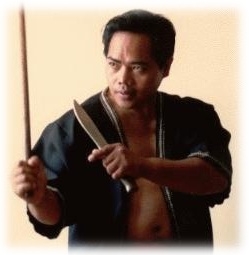
Lameco Eskrima is the system of Filipino martial arts founded by the late Punong Guro Edgar Sulite based on his training and experience with various Philippine Martial Arts masters, with heavy influence from Jose Caballero and Antonio Ilustrisimo. The word Lameco is actually a combination of words which are the three basic ranges of combat involved in the study and practice of Lameco Eskrima - Largo, Medio and Corto (Long, Middle, close). Contents One of the characteristics of Filipino martial arts is the use of weapons from the very beginning of training. Lameco uses Double and single Stick, Double and single Dagger, Stick and Dagger, Sword, Staff, Handkerchief, and Empty Hands. Lameco Eskrima is a synthesis of five major and six minor systems of Eskrima. Lameco training includes drills called Laban Laro (Play Fighting). Laban Laro allows the escrimador to come as close to real combat as possible without injury. It is also designed to get an uncountable number of repetitions in a short period of time. Through his constant efforts for developing new training innovations, Edgar invented unique armor for the hands and forearms that allowed practitioners to safely train more realistically. History At a young age Edgar Sulite's father exposed him to the Filipino Martial Arts, himself being a boxer and Arnisador. Growing up in the Barrios of the Philippines, Edgar witnessed many skirmishes settled blade against blade. Edgar trained with martial arts masters who included Leo Gaje of Pekiti-Tirsia, Jose Cabellero of De Campo Uno-Dos-Tres Orehenal, Jesus Abella of Modern Largos, Antonio Illustrisimo of Kali Illustrisimo and many others. In 1981, he moved to Manila to train under Grandmaster Antonio Ilustrisimo. After relocating to the United States on June 30, 1989. More on Punong Guro Edgart Sulite the founder of Lameco Eskrima at: http://backyardeskrima.com/?cat=11 … [Read more...]
Grandmaster Christopher ’Topher’ Ricketts Interview by David Foggie and Dino Flores
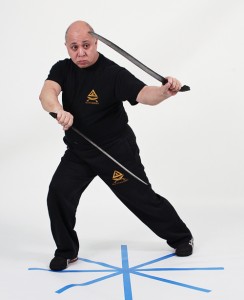
Grandmaster Christopher ’Topher’ Ricketts Interview Research & questions by David Foggie Interviewed by Dino Flores. Answers by Master Ricketts given in Tagalog, Translation by Dino Flores. Interview commenced 12 th February 2006 and conducted over a span of three months by Dino Flores in Los Angeles, California U.S.A. Grandmaster Christopher N. Ricketts or 'Master Topher 'is Chief Instructor of Bakbakan International whose motto is "Matira Matibay" (The Best of the Best). Concerned with training and passing on his knowledge to students rather than collecting accolades and titles, Master Topher's skills and credentials are impeccable and second to none; he is one of the best of the best. A senior disciple of the revered Grandmaster Antonio Ilustrisimo and one of the 5 Pillars of Kali Ilustrisimo, he is the highest ranking living instructor in Lameco Eskrima, having trained personally with Grandmaster Edgar Sulite. With teaching credentials in several martial arts systems including Ngo Cho Kuen (5 Ancestor Fist), Sagasa Filipino Kickboxing as well as being a professional boxing trainer, he has dedicated his life to the martial arts and other fighting systems. With his brother Ronnie Ricketts being a well known and respected action star in Philippine movies, Master Topher has provided his vast experience in the fighting arts to choreograph fight scenes. Through an introduction from my teacher Grandmaster Roland Dantes in 1998, I have been fortunate to benefit from Master Topher's extensive knowledge and experience. Knowing the high regard my instructor, Roland Dantes and many other respected elders of FMA hold Master Topher and having witnessed his immense skills, it was an opportunity not to be missed. When I first observed Master Topher demonstrate Kali Ilustrisimo at his home, I knew that I was in the presence of a genuine master of Kali Ilustrisimo. During our training sessions, the true scope of Master Topher's knowledge became apparent as did his effective use of body mechanics. Under Master Topher's instruction, I was introduced to the principles and techniques which form the foundation and in fact, the nucleus or core of Kali Ilustrisimo. With a sharp eye for perfect form and understanding, Master Topher meticulously dissected each technique and corrected even the minutest nuances until he was satisfied. My time spent training under Master Topher has afforded me the opportunity to see the various aspects of this remarkable martial artist. A remarkable man, he is a fighter, teacher and friend to his students. Martial arts are meant to be about honor, respect, integrity, loyalty and dedication. Master Topher embodies these traits and as such, it is easy to see why Grandmaster Roland Dantes and many other highly respected masters are his friends and respect him. It was with the approval of my teacher, Grandmaster Roland Dantes, I began studying Kali lIustrisimo under Master Topher and as such, I consider him also to be my teacher. More importantly, I consider him to be a respected, loyal and much valued friend. It is my pleasure and honor to present, Grandmaster Christopher 'Topher' Ricketts. (Q) Firstly what is the history and aim of Bakbakan? Bakbakan means something along the lines of a free for all brawl. Bakbakan was founded in 1967 by a group of instructors from various styles of martial arts in the Philippines. Prior to the organization becoming a bastion of martial arts in the Philippines, the main objective of the original members was to elevate their fighting skills through constant full contact sparring. Originally there were only six of us: Ding Binay, Rolly Maximo, Christian Gloria, Eddie Ben Alicante, Rey Vizer and myself. We would meet at my house in San Miguel Village in Makati, where my bedroom was our original gym. (Q) Prior to studying under Grandmaster Antonio Tatang' Ilustrisimo did you have much exposure to FMA? Prior to Kali Ilustrisimo my training included the Rapillon style of Mang Sciano Cleope in 1967. He was a well-known eskrimador from Quezon province of the Philippines and I was a training partner of his son, Edgar Cleope. For a little while I trained with Jimmy Gales in his arnis style which he called Sphinx. He used the centro baston (central grip) and susi (inverted grip) styles of wielding a stick. I also trained with Doc Lengson in the Arnis Federation of the Philippines style from 1973-1978. (Q) Grandmaster Ilustrsimo is celebrated as one of the greatest masters of FMA. How did you come to know of Tatang and how did you come to be accepted as his student? I was introduced to Tatang by my good friend Alex Co, a driving force in the Philippine martial arts world. It was the same time that I met Edgar Sulite, Yuli Romo and Tony Diego. When we met for some reason the old man took a liking to me and thus I was accepted as one of his students. (Q) You were exposed to and had seen other systems of arnis. Why did you decide … [Read more...]
Lameco SOG – Kapisanang Mandirigma
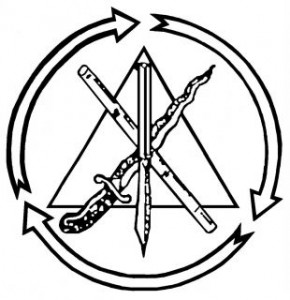
Lameco SOG - Kapisanang Mandirigma The Los Angeles – Historic Filipinotown Chapter of Lameco SOG - Kapisanang Mandirigma includes Guros Joel Adriatico, Hospecio "Bud" Balani Jr., Mar Elepaño, Choy Flores, Dino Flores, Arnold A. Noche, Gary Quan and Hans Anton Tan . It is also this core group that came up with the term “SOG” with the guidance and approval of the two highest-ranking Lameco Eskrima International members, Master Christopher N. Ricketts (RIP) and Master Reynaldo S. Galang. We are still in touch with the other Lameco SOG members (who are also very busy heading their own organizations) with whom we occasionally get together with to collaborate or socialize. The majority of us who banded together after our teacher's death continue to do so since 1997. When Punong Guro passed away, the members unified to keep his teachings and vision alive in ways besides the commercial route. Hence, we began volunteering / teaching a youth program in the Los Angeles Historic Filipinotown area. The program, which started in 1999, teaches Lameco Eskrima, Filipino Martial Arts, Philippine Culture and History as a diversion for ‘at risk youths’ from the temptations of gangs and drugs. Historic Filipinotown , located in Los Angeles' Rampart District, is notorious for being among the highest in gang, murder and drug activity in the country since the 1960's. In as much so, that Hollywood has portrayed it in television shows such as “Adam-12” and most recently in “The Shield” , as well as in feature films like “Training Day". Even the video game, "Grand Theft Auto: San Andreas", contains a story-line reminiscent of the Rampart Police Scandal of the 1990's. It's notoriety is also mentioned in the acclaimed literary works such as Charles Bukowskis' “Ham on Rye” and Carlos Bulosan’s “America is in the Heart”. The initial youth program has expanded into several other nonprofit agencies to include children, adults and seniors.* We even picked up a few awards along the way. Since then we have been involved in many aspects of the Filipino volunteer / cultural community that included being one of only two cultural groups to usher in the First Official "Filipinotown" in America– televised inside the iconic Los Angeles City Hall. Other activities include lecturing at the Filipino American National Historical Society (FANHS) Conferences and a number of prestigious universities as well and doing various newspaper, radio and television interviews in the U.S. and Philippines. To avoid typical martial arts politics, Lameco SOG members teach these Lameco Eskrima-based programs under different organizations. This has allowed us to focus on one of Punong Guro’s visions – to promote the Arts with honor and integrity. Punong Guro was passionate about his culture as a whole. Since Punong Guro Sulite's passing the group has continued to train together and have trained a second generation of students in the Lameco SOG method. Given the nature of our neighborhood, a number of these students have used their lessons for self-preservation with actual knife, stick and even gun situations. We have been teaching these students since they were teens. They are now adults and are now assisting us in teaching the next generation. … [Read more...]
Kali Klub Sa Historic Filipinotown Los Angeles
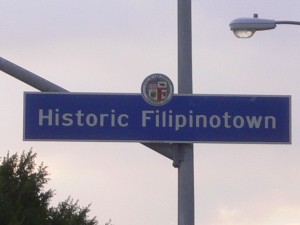
Kali Klub Kali Klub, an award-winning project of Kapisanang Mandirigma, initially started as a positive diversion against drugs and gangs for youths in the Temple-Beverly corridor, now known as Historic Filipinotown. It is; a collaboration with several non- profit agencies in the area such as FilAm Arts, SIPA and PWC. Now entering their 9th year, they have expanded to teaching Children (ages 5-12), Youths (ages 13-17), Adults (ages 18 & over) and Elders (ages 40 & Over) the Warrior Arts of the Philippines in a non-commercial, non-political environment where art, culture and heritage are integrated into their curriculum. Presentations include the dedication of Historic Filipinotown at the Los Angeles City Hall and a lecture/demo at the Filipino Historical Society Conference at Loyola University. Kali Klub sa FilAm ARTS - www.filamarts.org The Association for the Advancement of Filipino American Arts & Culture ("FilAm ARTS") was founded in 1999 but has consistently delivered the annual presentation of the Festival of Philippine Arts & Culture (FPAC) since their early beginnings in 1992 and has now added two other programs: the California-statewide Pilipino Artists Network (PAN) and the Eskuwela Kultura Neighborhood Cultural School. Kali Klub sa FilAm ARTS, established in 2004, is a joint project between Kapisanang Mandirigma and the Association for the Advancement of Filipino American Arts & Culture (FilAm ARTS) under their community-based nonprofit 501(c)(3) status. Kali Klub sa SIPA - www.esipa.org Founded in 1972, Search to Involve Pilipino Americans ("SIPA") has long established itself as a key service provider among the low-income and underserved multi- ethnic youth and families in the Temple Beverly corridor and the Pilipino American community of Los Angeles County. Their mission is to enhance the quality of life of the Pilipino American community by: Supporting youth development and leadership; Providing family programs, health and human services and affordable housing; Facilitation of collaborative actions within multi-ethnic communities. Kali Klub sa SIPA, established in 1999, is a joint project between Kapisanang Mandirigma and Search to Involve Pilipino Americans (SIPA) under their community- based nonprofit 501(c)(3) status. Kali Klub sa PWC - www.pwcsc.org The Pilipino Workers' Center ("PWC") was founded in 1997 on the idea that all workers have a right to safe working conditions, living wages, a decent standard of living and quality of life. Their mission is to organize Filipino Workers to collectively address our needs and issues both in the work place and in the community. Kali Klub sa PWC, established in 2003, is a joint project between Kapisanang Mandirigma and Pilipino Workers' Center (PWC) under their community-based nonprofit 501(c)(3) status. … [Read more...]
Mandirigma Research Organization/Mandirigma.org

Mandirigma Research Organization/Mandirigma.org, a project of Kapisanang Mandirigma, is a research organization dedicated to cultural research. Their focus includes preserving and promoting the Warrior Arts of the Philippines commonly known as Kali, Eskrima and Arnis. The Warrior Arts is one of the most important aspects of any society because its very nature is to defend and preserve the culture it originated from. Thus, mandirigma.org is also involved in researching culture in issues from ancient to current. The primary objective of mandirigma.org is to do its part in keeping alive ancient knowledge and give honor to the sacrifices made by previous generations. Using both traditional and modern methods in its work, mandirigma.org has organized, collaborated with and participated in classes, conferences, demonstrations, festivals, lectures, seminars and workshops with prominent college and community organizations. Aside from their hands-on approach, mandirigma.org utilizes multimedia technologies such as audio, desktop, video and web to reach people across the globe. Researching since the 1970's, mandirigma.org believes in being actively involved in giving back to the community. They have collaborated with and volunteered in various non-profit agencies. They have also arranged fundraisers in order to assist causes for indigenous tribal groups and organizations dedicated to cultural preservation in the Philippines. Mandirigma.org believes that this expansive pursuit is at its best a collaborative effort. This has allowed mandirigma.org to meet and work with many fine individuals and organizations throughout the Philippines, the United States and the world. mandirigma.org welcomes all with an open and positive mind to participate and join them on this never-ending cultural adventure. This humble site is dedicated to honoring the sacrifices of Filipino Warriors throughout the many generations that have come before us. Maraming Salamat! … [Read more...]
Kapisanang Mandirigma
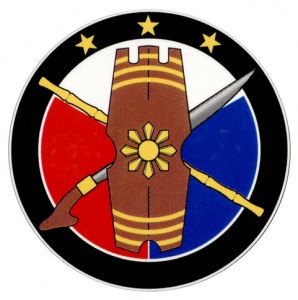
Kapisanang Mandirigma - A federation of warriors from different disciplines of the Warrior Arts of the Philippines. It is not a style, nor a representation of any singular style, but rather a federation of practitioners with similar goals to provide a vehicle for growth and personal discovery through continued training. Founded in 1998 by Guros Joel Adriatico, Hospecio "Bud" Balani Jr., Mar Elepaño, Choy Flores, Dino Flores, Arnold Noche, Gary Quan, Hans Anton Tan and Pantaleon “Mang Leo” Revilles, Jr. (RIP) from Lameco SOG (Sulite Orihinal Group), this unique federation has an ever-growing but extremely selective membership representing numerous progressive fighting styles. The ideas that interchange between the diverse styles and dedicated members create a dynamic foundation for continuously keeping the Warrior Arts of the Philippines alive with integrity for future generations. … [Read more...]
LAMECO: Legacy of Steel By Steve Tarani
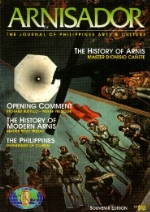
This article was reprinted with the author's permission from the Souvenir Edition of Arnisador Magazine published by Goodwill Publications Limited. More information about the magazine can be obtained by calling Peter Morgan in London at +44 (0) 171-895 0800. Saturday, June 1st, 1996 LAMECO: Legacy of Steel By Steve Tarani Swollen knuckles, bleeding forearms and battered shins - two warriors face off in a clearing. Sharp strikes of clashing rattan mix with the drawl of heavy breathing and shuffling feet. Intensely focused and alert, both combatants melt into the sweltering humidity. Glistening beads of sweat roll down to fingers wrought with open blisters. Ignoring the searing pain, each man continues fighting. Skillfully, cautiously - each life hinges upon immediate reaction to a deadly salvo of crushing blows. Such is the way of life of an Arnisador - a path chosen by Punong Guro Edgar G. Sulite. Since and before the days of Magellan, the Filipino martial arts have proven themselves highly effective standing in defiance of determined warring tribes, rabid Conquistadors and greedy foreign hordes. The LAMECO system, systematically structured and easily assimilatable according to modern training methods, is the stainless steel link in an unbroken chain of training succession. Great-grandfather to grandfather to father to son, a continual succession of knowledge and commitment breathes life into the ancient art from those very early days of foreign aggression to the current days of domestic violence. The heritage of combat-ready warriors runs deeply through the bloodline of the Sulite family tree. Born on September 25, 1957 in a rural province on the Visayan Island of Leyte, Tacloban City, Punong Guro Edgar G. Sulite was raised by a family of martial arts devotees in a rugged barrio neighborhood where deadly brawls and Bolo knife skirmishes were commonplace. In other martial arts, the attainment of a certain level automatically designates the title Master or Grandmaster. In the Philippines, there are certain norms to be satisfied before one can be called and accepted as a Master or Grandmaster. After expressing great interest in the Filipino fighting arts at a very early age, young Edgar was introduced to the rigorous training by his own father - Grandmaster Helacrio Sulite Sr. Grandmaster Helacrio first studied with his father Grandmaster Timoteo Sulite in the 1930s. Grandmaster Helacrio went on to further enhance his skills under the tutelage of several other Arnis masters of varied styles (such as the late Grandmaster Melicio Ilustrisimo and Master Almario of Cebu among others.) Grandmaster Timoteo Sulite's instructors were active in the mid-19th century and their grandfathers recalled stories of their grandfathers which included the defeat of several infamous Spanish conquistadors using the very same styles of Arnis that have been meticulously passed down to Punong Guro Edgar G. Sulite who, in turn, continues the solemn tradition to this very day. While simultaneously training under his father and coming to master the family system known as Sulite Rapelon, Punong Guro Edgar G. Sulite continually expanded his skills and combat technology by training intently with several other masters and Grandmasters all across the Philippine Islands. Punong Guro devoted his entire life to the study of the ancient systems and masters who transformed him from young eager aspirant to the refined physical embodiment of technical perfection that he has become today. Among the long list of such distinguished curators of the ancient ways is Grandmaster Antonio Ilustrisimo of Bag-on Bantayan - founder of Kali Ilustrisimo, Grandmaster Jose D. Caballero of Ozamis City, Western Mindanao - founder of De Campo 1-2-3 Orihenal and Grandmaster Leo T. Gaje Jr. of Negros Occidental - founder of Pekiti Tirsia (a close quarters combat system that specializes in knife and Espada y Daga.) Punong Guro sheds further light on the methods of his masters in a series of educational books and video tapes available to the general public. Especially in his third book, MASTERS OF ARNIS, KALI & ESKRIMA, Punong Guro provides a rare glimpse into the arcane and mystical world of the traditional Filipino warrior class. Punong Guro is also the author of ADVANCED BALISONG: FILIPINO BUTTERFLY KNIFE and THE SECRETS OF ARNIS and has produced a total of ten instructional video tapes. Punong Guro Sulite believes that the ancient tradition of keeping the sacred art only in the family is a double-edged sword. On the one hand the art is kept pure and in accordance with tradition. On the other hand, as modern times erode the interests of today's youth, (who would much rather play video games rather than listen to grandpa tell old war stories,) the passing of the torch becomes more and more limited to only a select few. Unfortunately, when such masters pass away, so goes with them, forever, the art which they … [Read more...]
















